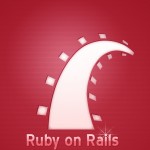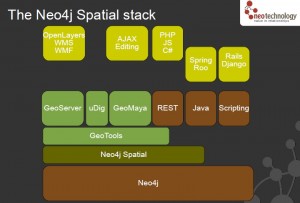Programming Language / Framework
The chosen language of 3speech implementation is Ruby, which is a dynamic, reflective, general-purpose, open source, object-oriented programming language. Ruby supports multiple programming paradigms, including functional, object oriented, imperative and reflective. 3speech was developed using the Ruby on Rails, open source full-stack web application framework which is a variant of the Model/View/Controller (MVC) architecture pattern to organize application programming. Ruby on Rails is a full-stack framework, meaning that it gave us the full ability to gather information from the web server, talking to or querying the database, and template rendering out of the box.
Web Server
I2P Webserver – A tunnel pointed to a Jetty webserver run on localhost:7658 for convenient and quick hosting on I2P.
The document root is:
Unix – %APPDATA%\I2P\eepsite\docroot
Windows – C:\Users\**username**\AppData\Roaming\I2P\eepsite\docroot
A future consideration is to use server virtualization, which is the partitioning of a physical server into smaller virtual servers to help maximize our server resources. In server virtualization the resources of the server itself are hidden, or masked, from users, and software is used to divide the physical server into multiple virtual environments.
Server virtualization also conserves space through consolidation as several machines can be consolidated into one server running multiple virtual environments. It also utilizes resources to the fullest so we can also save on operational costs (e.g. using a lower number of physical servers reduces hardware maintenance).
Database choice: NOSQL
NoSQL, which most now take to mean “Not Only SQL,” is a new non-relational approach to data
management that supports dynamic and flexible schemas, optimized storage for web scale, and
extreme performance as well as makes semi-structured and unstructured data easier to use and
access. Although RDBMS technology is still a good fit for critical transactional applications, new types of applications are motivating architects to look elsewhere when the relational approach falls short. Craigslist, Facebook, Twitter, Yahoo, and YouTube have already used NoSQL to support demanding web-scale applications. Although adoption of NoSQL in enterprises is around 4%, Forrester expects this to double in the next two years and that by 2015, 20% of enterprises will use NoSQL to support some or all of their applications. This is one of the major reasons for choosing to use NoSQL.
NoSQL offers several benefits in the areas of data management, access, storage, scale, and performance that make it a viable alternative to RDBMS. NoSQL delivers:
Flexible schema structures to support new types of applications.
Unlike an RDBMS, which requires the application developer to predefine data attributes, entities, and relationships, NoSQL offers a more flexible approach in which the application rather than the data store defines the schema and access paths. NoSQL supports a wide range of new data types, including textual types such as JSON as well as many other unstructured and semistructured data types. NoSQL’s inclusion of these flexible schemas and data types makes it easier to build new types of social media, cloud, and other scale-out applications.
High-performance key-value data reads and writes.
Applications that require extensive data reads and writes often experience excessive latency due to disk input/output (I/O) bottlenecks, especially when the app has high volumes of both. NoSQL approaches are efficient at reading very large amounts of data in a scale-out model, with each node in a cluster having its own I/O channels and controllers to deliver linear scale. For example, Twitter spreads accounts across thousands of nodes using a key-value store, and millions of users get low latency while concurrently accessing data. Conversely, NoSQL is not well suited to joining entities unless the store contains prejoined data.
Elastic scale to support dynamic workloads.
Because of the need to partition data across multiple databases, it’s challenging to scale out an RDBMS to handle growth. This makes it challenging to use an RDBMS when building an application that can easily scale from a thousand to a million users. NoSQL’s shared-nothing, scale-out architecture makes it easy to add nodes in a cluster or cloud to deliver linear scale.
Simplicity that makes it easy to get started.
NoSQL solutions have a fourth of the features of a typical RDBMS. This makes NoSQL easier to learn than a traditional DBMS as well as simpler to use when developing and deploying applications. From what we heard in interviews in the past year, many application developers like the simplicity and ease of using NoSQL in development. When using NoSQL, application developers have complete control over data storage and access and typically don’t need a database administrator (DBA) to support the NoSQL data store.
A lower-cost data management platform.
Many NoSQL solutions are open source, and others sell for much less than a full version of a commercial RDBMS. Compared with conventional DBMSes, NoSQL products often save enterprises more than 50% of the cost.
Freedom to innovate.
NoSQL is for application developers and programmers who want complete control and flexibility to store and access data in the manner they want without having to comply with the constraints and rigid structures an RDBMS imposes.
Neo4j is an open-source graph database, implemented in Java. The developers describe Neo4j as “embedded, disk-based, fully transactional Java persistence engine that stores data structured in graphs rather than in tables”.
Key benefits*
A graph data model which enables high performance queries on the complex, connected data inherent in today’s applications. You can ask questions such as “Who are all my contacts in Europe?” and “Which of my contacts ordered from this catalog?” It can traverse complex graphs with improvements of 1000x or more compared to SQL and other NOSQL databases.
A graph data model which simplifies the development of applications using complex, connected data. Enterprises can quickly capture all kinds of data – structured, semi-structured, and unstructured – and easily store it in Neo4j. This results in shorter development times, lower maintenance costs and higher performance.
Mature support for transactions so that enterprise developers can execute “all or nothing” transactions. Although this is a must-have for relational databases, none of the other NOSQL databases can do this. Neo4j supports full ACID transactions including XA-compliant distributed two-phase commits.
Enterprise-grade durability that ensures that any transaction committed to the database will not be lost. I
Awesome Java support. While supporting all of the leading development platforms, (Ruby, Python, Groovy, Gremlin, etc) Neo4j began in Java and will always be easily accessible and available for Java, the most widely used development environment in the enterprise.
This was also incredibly help full in helping us learn about representing our social network in the database: Social Network in the Database: Using a Graph Database
*Taken from the neo4j website.


